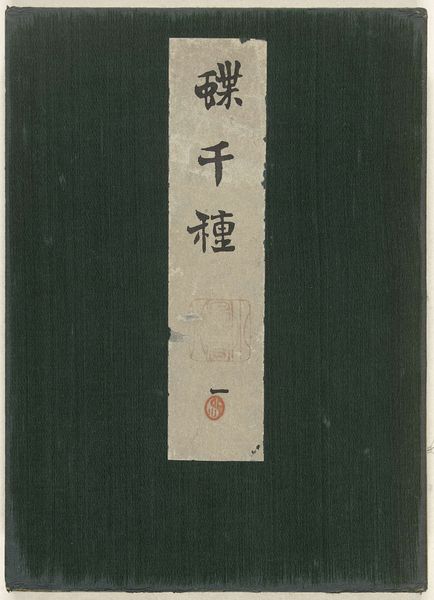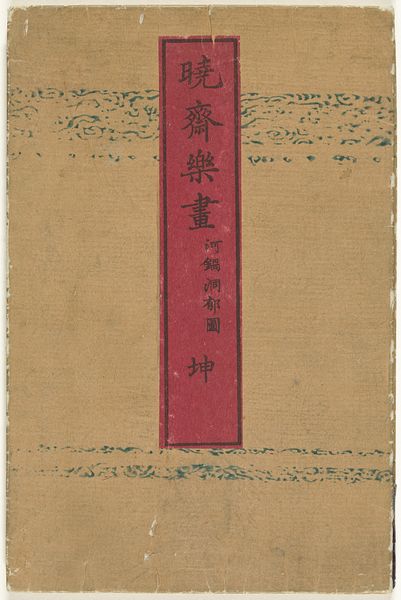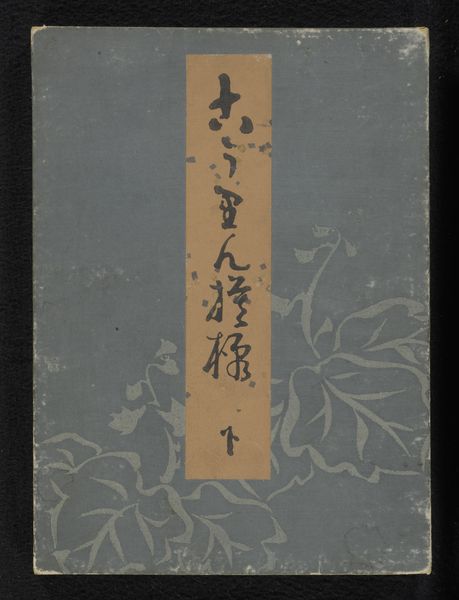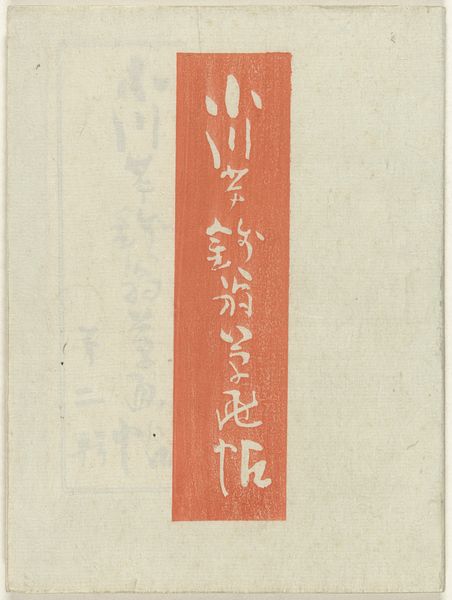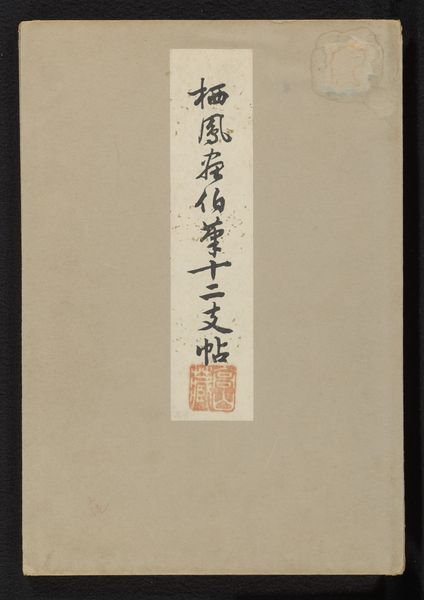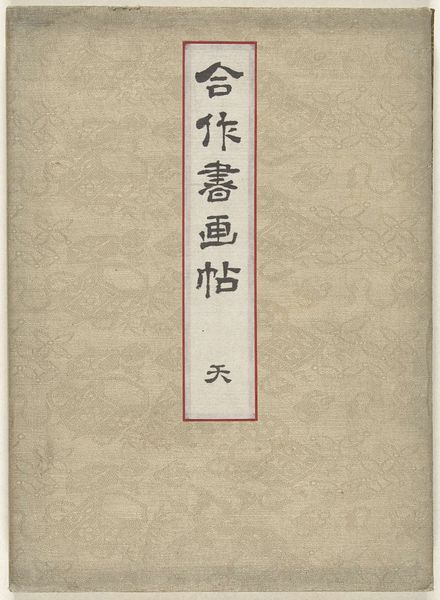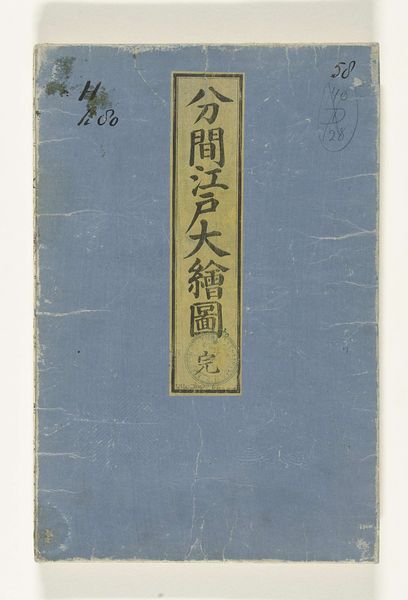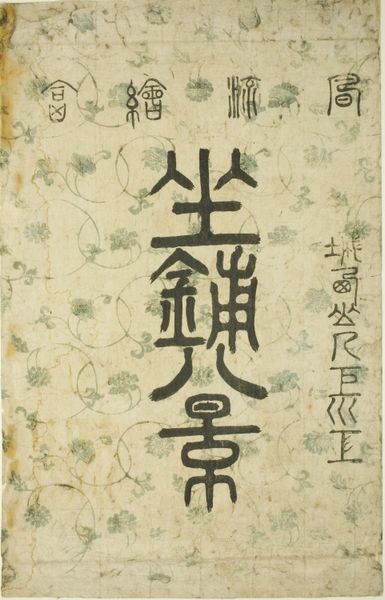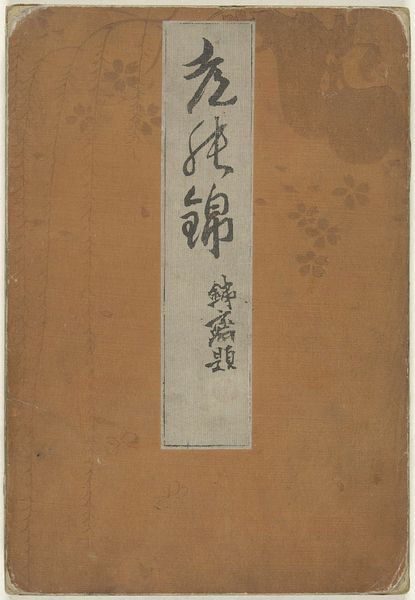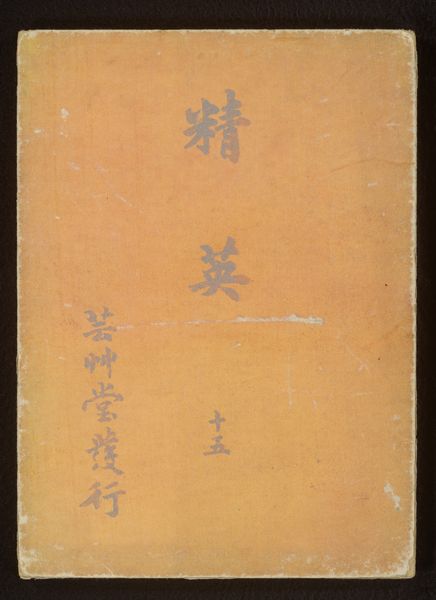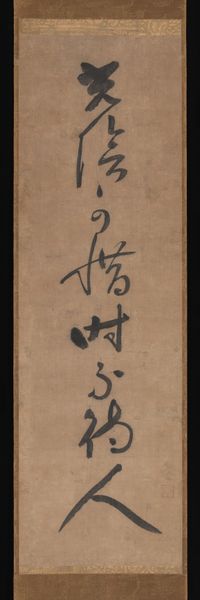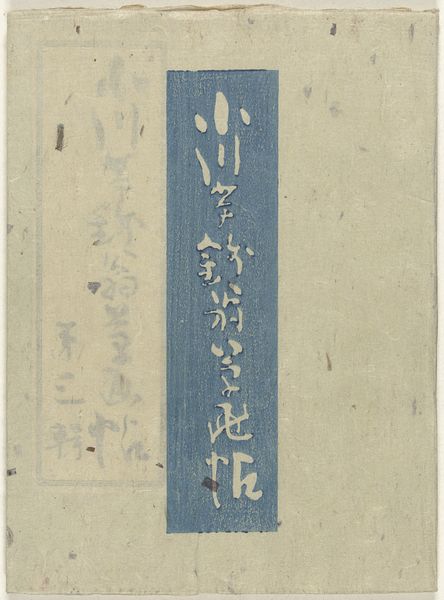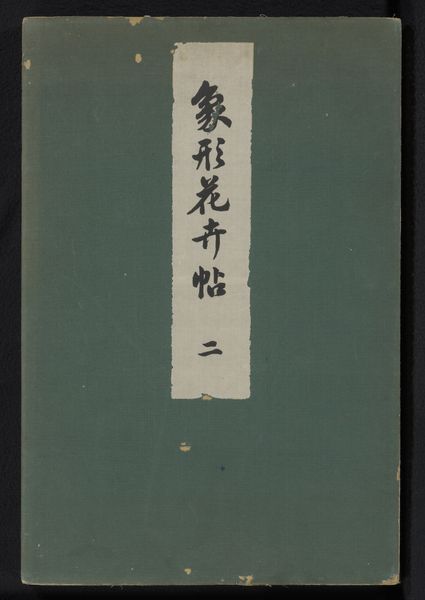
Dimensions: height 248 mm, width 179 mm
Copyright: Rijks Museum: Open Domain
Curator: Today we're observing Kamisaka Sekka's 'Een keur van duizend vlinders, deel één', a Japanese print dating from 1903-1906. Editor: My first thought is of the raw materials and simple cover. I am so fascinated by its deep, calming green against that textured label. Curator: The work employs woodblock printing and collage and the label evokes a sense of anticipation of all of the prints in the book. Butterflies in Japanese art often represent transformation and joy. The notion of ‘a thousand butterflies’ becomes powerful when considered as rebirth or souls. Editor: I’m wondering about the specific labour involved, not just Sekka’s design, but the block carvers and printers who brought this to life. It’s printed; probably not fine art in its own time, it would be produced en masse... a working person's access to beautiful things. Curator: The Ukiyo-e movement to which Sekka belonged intentionally defied social strictures about art. The book is more than an aesthetic experience—the pages could act almost like talismans, tools for contemplation to conjure feelings. What would it mean to carry around this promise, this potential, that 'a thousand butterflies' implies? Editor: Exactly, mass production allowed these spiritual totems to circulate through the wider culture, shifting them out of temples and elites and right into the hands of people working and surviving, making and consuming. So we can see this "print" and reflect not only about aesthetic traditions but to engage with social change via materials and method. Curator: Precisely, Sekka and others of his time took their knowledge of older schools of art, then applied it in these radical ways, in an era when these historical archetypes became more distant or obscure in ordinary life. What this book means is always evolving. Editor: Seeing how production and artistry blend so fluently pushes me to keep asking questions. Even this object asks, how can art transform life on a grander scale than we often acknowledge?
Comments
No comments
Be the first to comment and join the conversation on the ultimate creative platform.
